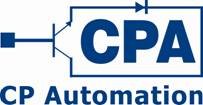Measure, analyse, report, solve
Measuring your usage to diagnose where to make energy savings
According to
the Carbon Trust,
cash savings of up to 20 per cent can be achieved through energy efficiency
measures such as installing variable-speed drives (VSD) for fans, pumps, and
other motor driven systems. But, a one size fits all approach to energy savings
just won’t do. Here,
John Mitchell, global
sales & marketing director at supply, installation and repair specialist CP Automation, explains how plants should
measure their energy usage to find the best energy saving opportunities.
The
ISO
50001 standard requires organisations to establish,
implement, maintain and improve an energy management system. To make energy
savings, a plant manager must first understand their facility’s energy usage.
It sounds obvious, but in reality, achieving energy control and crucial ongoing
energy savings requires a strategized approach. The first step is to measure
your energy usage.
Many
modern distribution and energy management systems already incorporate energy
monitoring and logging facilities. However, they may only have a limited amount
of memory and are unable to store results over an extended period. In addition,
many integrated monitors only store summarised data that do not provide the
level of detail needed for effective energy optimisation.
Portable
power and energy loggers (PELs) provide a convenient and cost-effective alternative,
with far superior capabilities. These PELs, from Chauvin Arnoux for example,
can be installed in several different locations, with data from different
processes or equipment available on a single screen. A real benefit of these
modern devices is that equipment doesn’t need to be turned off and isolated
during the installation process.
The
next step is carrying out an energy audit. The data from the PEL will show
where the most energy is being used in your plant and consequently where the
most potential for energy savings can be found. The results from this report
will inform the type of improvements to implement and crucially where they
should be implemented.
Energy
saving opportunities can fall into two broad categories, those that relate to
the workplace environment and technical aspects of the electricity supply. For
example, a plant could improve the efficiency of the workplace environment by cutting
down on unnecessary out-of-hours usage by switching to LED lighting with
occupancy sensors. On the other hand, an energy audit may find that a motor is
consuming a high amount of wattless or useless power. In this instance, power
factor correction would need to be installed to reduce this wastage, without
compromising the performance of the equipment.
It’s
one thing implementing energy savings, but it’s also important to continually
monitor your system to ensure you’re getting ongoing energy improvements.
Plants should also formulate a metering plan to measure and analyse energy
usage over an extended period of time. This will assess whether the chosen
energy efficiency measures have been effective or whether further improvements
can be made.
Plants
may choose to implement energy efficiency schemes for a range of reasons. While
there are several universal energy saving fixes, it’s important that facilities
use a targeted approach, which accurately monitors their systems to achieve the
most effective energy and cost saving potential.
CP
Automation offer a range of products and services to monitor power quality
problems and energy usage. Visit www.cpaltd.net
for further information about Chauvin Arnoux’s industry leading PEL kits
which are available for purchase or hire. Alternatively contact sales@cpaltd.net to take advantage
of the full data analysis, reporting and
solution implementation service.



